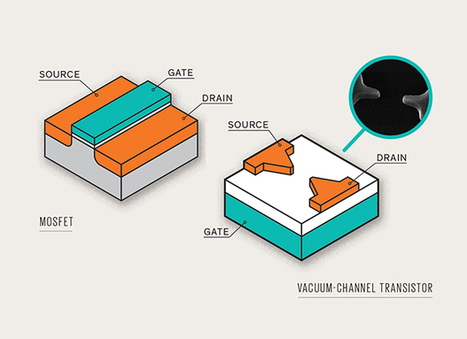Way back in the salad days of digital computing (the 1940s and '50s), computers were made of vacuum tubes -- big, hot, clunky devices that, when you got right down to it, were essentially glorified light bulbs. This is why early computers like the ENIAC weighed more than 27 tons and consumed more power than a small town. Later, obviously, vacuum tubes would be replaced by probably the greatest invention of all time -- the solid-state transistor -- which would allow for the creation of smaller, faster, cheaper, and more reliable computers. Fast forward to 2014, though, and the humble CMOS field-effect transistor (FET) is starting to show its age. We've pretty much hit the limit on shrinking silicon transistors any further, and they can't operate at speeds much faster than a few gigahertz. Which is why NASA's Ames Research Center is going back to the future with its new vacuum transistor -- a nanometer-scale vacuum tube that, in early testing, has reached speeds of up to 460GHz.
Research and publish the best content.
Get Started for FREE
Sign up with Facebook Sign up with X
I don't have a Facebook or a X account
Already have an account: Login
Everything from new developments and discoveries in the Technology world: science, ICT, medicine, pharma...
Curated by
Gust MEES
 Your new post is loading... Your new post is loading...
 Your new post is loading... Your new post is loading...
|











Great engineering connections!